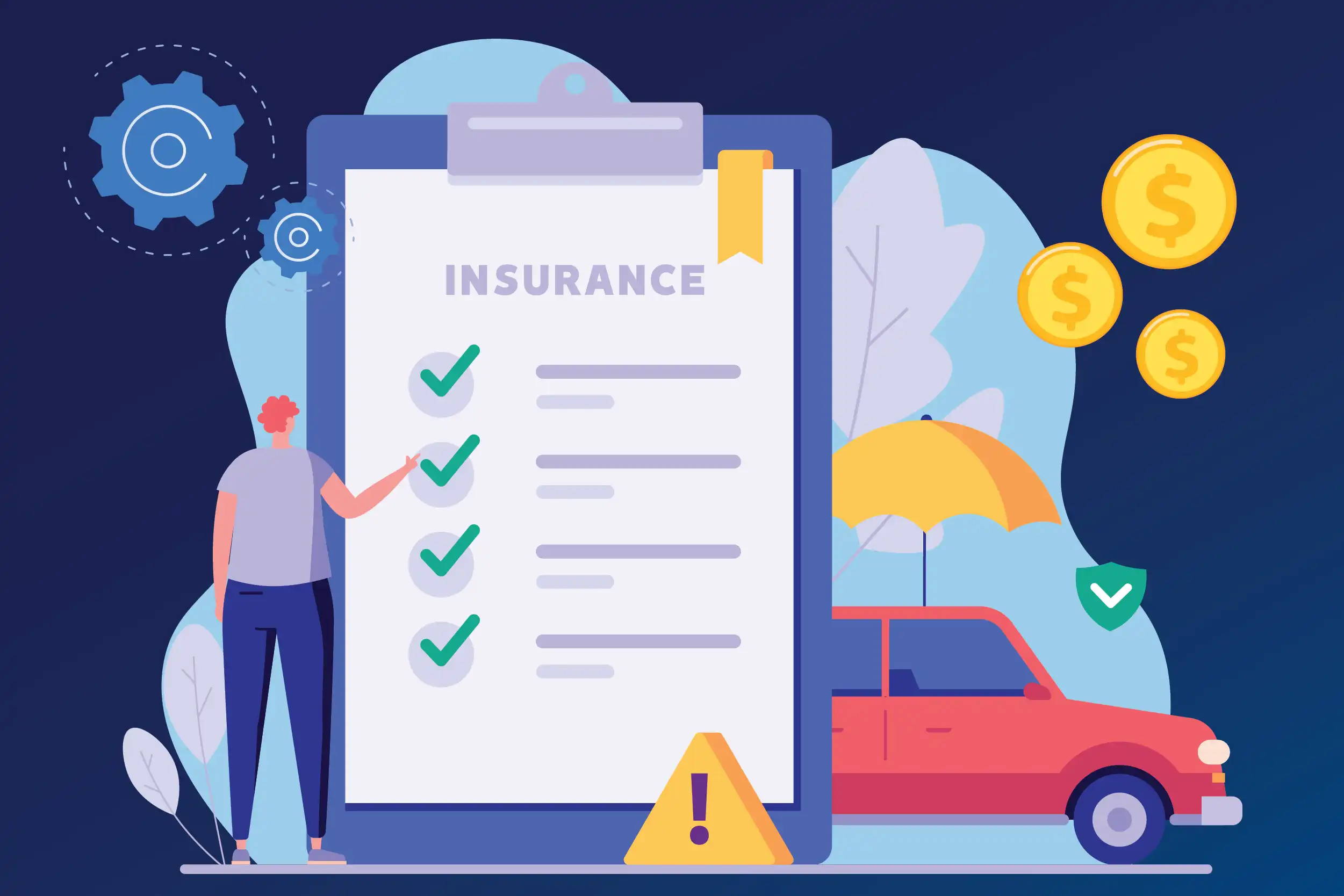Independent contractors are commonly utilized as drivers outsourced to facilitate the delivery of commodities within the Courier/Last Mile industry. Most of these contractors drive non-commercial vehicles (defined as vehicles under 10,000 lbs. GVW or Gross Vehicle Weight), typically private passenger vehicles. Historically, very few insurance carriers have knowingly offered coverage for these types of operations – with even fewer providing a program for Hired and Non-Owned Auto (HNOA) coverage and other necessary coverage lines specific to this industry. Countless carriers write the HNOA coverage without understanding the industry and the associated exposures.
Many companies during the industry’s infancy in the 80s and early 90s were small and conducting business without the proper federal and state operating authority, often unknowingly. During this period, many companies operating with the proper authority were challenging those companies not operating with proper authority publicly and within their professional networks. With this raised awareness, shippers became more selective with the delivery companies they were contracting with. Despite this increased focus on proper contractor vetting, many delivery companies still had a learning curve to secure the proper operating authority.
Several of these operations solely utilized contractors; the majority did not have company-owned vehicles and, as such, couldn’t get the necessary auto liability insurance required by the FMCSA and the various state regulatory bodies. Some insurance agents developed a solution to have the delivery company transfer their personal vehicle into the company’s name and obtain a business auto insurance policy, thus allowing the insurance carrier to file the necessary regulatory insurance. However, in so doing, they were essentially picking up the auto liability exposure of the contractors operating under the delivery companies’ authority. Some insurance carriers would typically make some minimal HNOA premium charge, while other companies didn’t make any charge yet in all cases; once they made the regulatory filings, they were essentially forced into the position of primary coverage.
Most delivery companies, via their contractor agreements, require the contractors to carry auto liability insurance. The required limits generally varied between state minimum limits, e.g., 15/30/15 to 100/300/50. However, in most cases, the auto liability insurance requirement didn’t specify commercial/business auto liability insurance. For many years, the Personal Auto Policies (PAP) that the contractors carried did work – claims experienced while the contractors were delivering goods for the contracted delivery companies were paid by the PAP carriers even though virtually every PAP has a “business use exclusion.”
As the industry grew in the mid-90s, several delivery company insurance programs were developed (as well as several one-off insurance carriers). These programs and carriers seemingly applied a reasonable premium charge (i.e., affordable for the insured delivery company and enough for the insurance company to cover claims with profitability). They made the necessary regulatory filings on a straight HNOA policy. It’s contended that these companies perhaps didn’t fully understand the exposure, but this was done for many years with continued success.
From 2011 through 2020, the commercial auto insurance segment was unprofitable… yes, a complete decade. There was a bit of a reprieve in 2021, where the combined loss and expense ratio was just 98%. From 2022 forward, it will be unprofitable again in the current years, with over 104% commonly used by carriers.
While this negative experience primarily reflected accurate “fleet auto,” the industry saw a significant trend in HNOA losses, both in frequency and severity. Beginning circa 2013, HNOA rates increased with regularity year over year at a modest 2-5% for a profitable performing risk. Around 2017, modest became 5-10% for the same caliber risk. By 2019, the general negative loss experience was growing at an alarming rate – pricing escalated further at a more rapid 15%+ rate increase coupled with significant deductibles ($10-$25K) being implemented, particularly in highly litigious states like FL and CA.
The question is, what caused the commercial auto experience to spool up at this rate? There’s a variety of factors, most of which are obvious:
- Distracted driving, predominantly due to smartphones
- An increase in miles driven, which was pre-COVID but has since returned to normal since 2022
- Spiraling expenses related to private equity litigation funding, social inflation, nuclear verdicts, medical costs, repair, towing, and storage
- A shortage of skilled drivers
- Litigation funding and social inflation
- An eroding infrastructure.
As noted prior, the PAPs worked for many years. Still, given the recent growth within the gig economy specific to delivery and deteriorating industry loss experience results, insurance carriers are increasingly becoming more diligent in investigating accidents and routinely applying policy exclusions – primarily for business use. Today, PAPs without a business use endorsement are commonly regarded as having no value to contractors. Subsequently, fewer (less than 10 –program or otherwise) insurance carriers are willing to write HNOA. Those that will are imposing stringent underwriting standards (not the least of which is the requirement to report and charge premiums on all drivers during the policy term), charging premiums that continue to inch towards primary auto and imposing significant deductibles (10k -100k) across all regions, no longer focusing on just SoFL and CA.
It should also be noted that it’s not just the adverse loss experience in the commercial auto insurance segment affecting HNOA for the delivery industry. While loss experience within the personal/private auto insurance segment has been on a negative trend for several years, 2022 puts things in perspective. The 2022 net combined loss ratio of 111.8% topped the previous high of the past 27 years –110.4% in 2000. To put an exclamation point(s) on this trend, consider that State Farm, the leading writer of personal/private auto insurance in the US, had a combined ratio 2022 of 127.9%! The factors affecting the commercial auto segment are the same ones driving the private auto environment in addition to age (low-end 16 and high-end 70+). Further, the average severity of a bodily injury/property damage claim is north of $40,000, far exceeding most state mandatory limits. With the increased trends in severity, the industry is in a state of flux.
So, what can be done to help the contractor delivery industry? Understanding there is no perfect solution –something else contributing to the adverse loss experience is the difficulty in implementing safety/loss control measures within the industry. Most drivers are contractors, so for a delivery company, even if so inclined to utilize safety/loss control programs, they face the “direction and control” issue – i.e., the drivers are “independent” contractors, so how can one impose training and safety standards subject to reward/penalty? One way to deal with the broad auto insurance issue is to utilize a “While Under Dispatch” (WUD) auto liability program. Such programs are offered by a few select insurance brokers who work closely with the industry, as well as some programs available through third-party contractor management companies such as Openforce, widely recognized as the industry leader in the space. In addition to providing the WUD auto liability coverage at a reasonably affordable premium (note the contractor is only paying for the time they are literally “under dispatch”), driver training/safety programs are available, and since these aren’t being provided by the delivery company, direction and control isn’t a factor.
Conversely, the contractor may obtain a “business use endorsement” to their PAP, should it be available to them. However, one must be careful – the scope of the endorsement may be limited as to what type of “business use” it applies to. Also, even if it’s a “good” endorsement, it will be hard to track, i.e., if it is canceled or otherwise taken off mid-term.
As noted earlier, there’s no singular solution, but a WUD program is a step in the right direction for insured and carrier partners. Foundationally, the contractor will have auto liability insurance that applies! In addition to giving the contractor real insurance for the exposure, the insurance underwriter is now more comfortable with the risk. The HNOA will be excess over the contractor’s while under dispatch. As such, the HNOA premium will be credited reasonably (assuming all the insured’s contractors are in the program). It’s still a balancing act, i.e., auto loss experience for all the reasons previously cited will continue to be challenging, as will the contractor’s ability to absorb the cost of the WUD premium plus having to maintain their PAP. From the delivery company’s standpoint, they’ll likely need to increase commissions paid to the contractor. Unfortunately, the credit/savings they get from their contractor population being in a WUD program won’t cover the increased commission expense, but it will help. This appears to be the best solution to keep Hired and Non-Owned Auto available and affordable for the foreseeable future. Like everything else in the supply chain economy, the business costs must be passed on to shippers and, ultimately, to the consumer.

Jeff Ice
Retired Executive Director and Current Consultant,
Risk Strategies Transportation Insurance Practice
Customized Logistics Delivery Association’s 2023 Hall of Fame Inductee
About Openforce
Openforce is the leader in technology-driven services that reduce operating costs and mitigate risk for companies using independent contractors. Our cloud-based applications help companies and contractors alike achieve more sustainable, profitable growth by removing financial, operational, and compliance barriers to getting business done.

